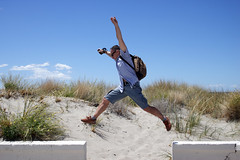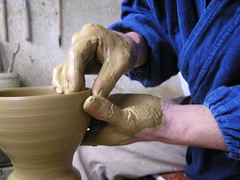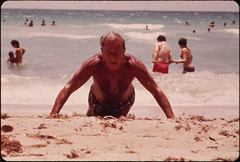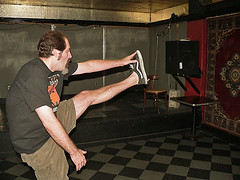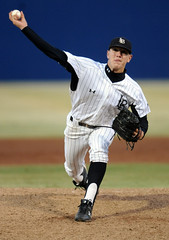
In an article by Christopher Smith writing for EAGLETRIBUNE.COM on November 26, 2011 he reports on the trouble that all pitchers face.
Connor Nolan pitched almost year round as a teen. ”I threw high school, Legion, fall ball,” Nolan said. “You just want to get noticed. It’s hard, especially coming from the northeast.”
Nolan, a graduate of Salem, N.H., High and a 2007 Eagle-Tribune All-Star, was determined to win a college baseball scholarship.
He finally achieved his dream, winning a baseball scholarship to Florida State.
But in the process, he ruined his pitching arm and his hopes of making the big leagues.
The beginning of the end came in 2008 when he tore his ulnar collateral ligament — the ligament that connects the upper arm bone to the inside bone of the forearm. A four-inch scar that crosses his elbow is a souvenir of the Tommy John surgery he needed to repair the damage.
Nolan is just one example of a trend affecting young pitchers, one that should trouble their parents and coaches.
Tommy John surgery is named for a former Dodgers and Yankees pitcher, and it is usually associated with professional players. Red Sox pitchers Daisuke Matsuzaka, John Lackey and Rich Hill have all undergone the surgery since June.
But increasingly, Tommy John surgery is being performed on amateur pitchers in college, high school and even youth leagues.
Andrews Sports Medicine & Orthopaedic Center in Birmingham, Ala., is one of the nation’s leading centers for the procedure.
Of the 1,607 surgeries performed at Andrews from 1994 through 2010, 374 — 23 percent — were performed on youth and high school athletes. And the percentage has been on the rise. In 2010, 31 percent of Tommy John surgeries at Andrews were on youth and high school pitchers. Ten years earlier, the figure was 18 percent.
“The most rapidly growing demographic of Tommy John surgery is actually in youth baseball,” said Dr. Thomas Gill, chief of Massachusetts General Hospital sports medicine service and former Boston Red Sox medical director.
Many factors contribute to the rise.
Young pitchers are throwing year-round, even in snowbelt states, thanks to indoor practice facilities. Under pressure to impress coaches and scouts, pitchers are throwing with elbow pain as early as Little League and throwing too many pitches during games. Some coaches are also using young pitchers to play other positions, like catcher and shortstop. They’re throwing hard and often on what are supposed to be their days of rest.
“Probably the most common cause is overuse in our young population,” said Dr. Luke Oh, a sports medicine orthopedic surgeon at Massachusetts General Hospital and a Boston Red Sox team physician.
Shoulder woes
Now 23, Connor Nolan was pitching freshman ball for St. Johns River Community College in Palatka, Fla., and beginning to attract notice from pro scouts when he tore his ulnar collateral ligament and underwent Tommy John surgery in 2008.
Nolan said he had been pitching without a stop for two years straight. “I was throwing in the winter,” he said.
Before the tear, he had some elbow pain but wanted to impress his coach and the scouts.
“I was throwing really well in the fall. My velocity was there. My breaking ball was good. I just pushed it too much.”
After the surgery, Nolan returned to the mound in the fall of 2009.
But his arm angle had changed from over the top to three-quarters style. “When I switched my arm angle, something didn’t feel right in my shoulder, but I was throwing good,” he said. “I was throwing low-to-mid 90s.”
His fastball reached 94 mph at a showcase where Florida State discovered him.
Nolan enrolled at Florida State in 2010. But playing ball that fall, he tore his labrum — the cartilage that, among other things, helps hold the shoulder joint together.
He underwent shoulder surgery.
Gill, the sports medicine expert, said it’s not unusual for young players who have undergone Tommy John surgery to develop shoulder problems.
“They’re getting labral injuries or rotator cuff injuries simply because they didn’t keep their shoulder (conditioning) program going and their shoulder strength up. They were doing all the rehab for the elbow.”
Nolan said doctors told him it would take eight to 10 months to recover from shoulder surgery. Instead, he was rushed back after six months to pitch out of the bullpen last spring. He blames himself as well as Florida State.
“It was sort of my fault and their fault,” Nolan said. “I wanted to get out there and throw.”
Nolan said he would throw a few innings, then be unable to throw for a week and a half.
“I was in so much pain, I just couldn’t do it anymore,” Nolan said. “My arm has sort of reached that point where you want to play but you can’t.”
Nolan is still at Florida State, studying sociology and criminology, but does not expect to pitch competitively again.
‘Kids overworked’
Gill said youth pitchers in his hometown outside Boston play baseball year-round and pitch in as many as three different leagues simultaneously.
Each league might limit the number of pitches that can be thrown in a week, Gill said, but doesn’t keep track of the number thrown in other leagues.
“Plus let’s say a pitcher is then a catcher or a shortstop or a third baseman when he is not pitching. … Kids today are just getting completely overworked and are throwing way, way too much.”
Gill said major leaguers typically don’t throw from the end of the season until Jan. 1.
“Whereas kids now, they’re throwing year-round,” Gill said. “They simply have to have a season down.”
But Nolan said there is pressure to keep pitching, even with elbow pain, both to help your team and get ahead in the game.
“I think everybody who is a pitcher pitches with pain,” Nolan said. “You just work through it.”
Seven of 18 local varsity coaches surveyed by The Eagle-Tribune said they believe at least half of today’s high school pitchers would pitch with arm pain without saying anything.
Longtime Pinkerton Academy baseball coach Ron Manseau said playing in pain is part of the culture of high school athletes. “They’ve been brought up through the ranks (and told), ‘Toughen up, be a man about things, handle it, don’t complain,’” Manseau said.
But Dr. Oh, the sports orthopedic surgeon, said that must change.
“They should not be pitching with elbow pain really at any level but particularly as a young person.”
Gill said young pitchers risk damage even though they are throwing at slower speeds than professionals because their elbow musculature is not as well formed.
“So they have much less protection of the ligament and the stresses that the ligament sees,” Gill said.
Nolan wishes he had known as much in high school as he does now about the risks he faced by pitching so much.
“I didn’t really understand arm injuries,” Nolan said. “I just threw. I was a skinny, scrawny, tall kid who just threw hard.”
The newly developed ArmTutor provides much needed therapy to injuries suffered by baseball pitchers.
The ArmTutor™ system has been developed to allow for functional rehabilitation of the upper extremity. The system consists of an ergonomic wearable arm brace and dedicated rehabilitation software. The ArmTutor™ system allows for a range of biomechanical evaluation including speed, passive and active range of motion and motion analysis of the upper extremity. Quantitative biomechanical data allow for objective evaluation and rehabilitation treatment follow up. The ArmTutor™ rehabilitation concept is based on performing controlled exercise rehabilitation practice at a patient customized level with real time accurate feedback on the patient’s performance. The exercises are designed in the form of challenging games that are suitable for a wide variety of neurological and orthopedic injury and disease.
The games challenge the patient to perform the exercise task to their best ability and to continue exercise practice.
The ArmTutor™ allows for isolated and a combination of elbow and three directional shoulder treatment. The system provides detailed exercise performance instructions and precise feedback on the patients exercise performance. Controlled exercise of multijoints within the normal movement pattern prevents the development of undesired and compensatory joint movement and ensures better performance of functional tasks.
The ArmTutor™ system together with its sister devices (HandTutor, LegTutor, 3DTutor) is used by many leading rehabilitation centers worldwide and has full FDA and CE certification. See www.HandTutor.com for more information.
.

